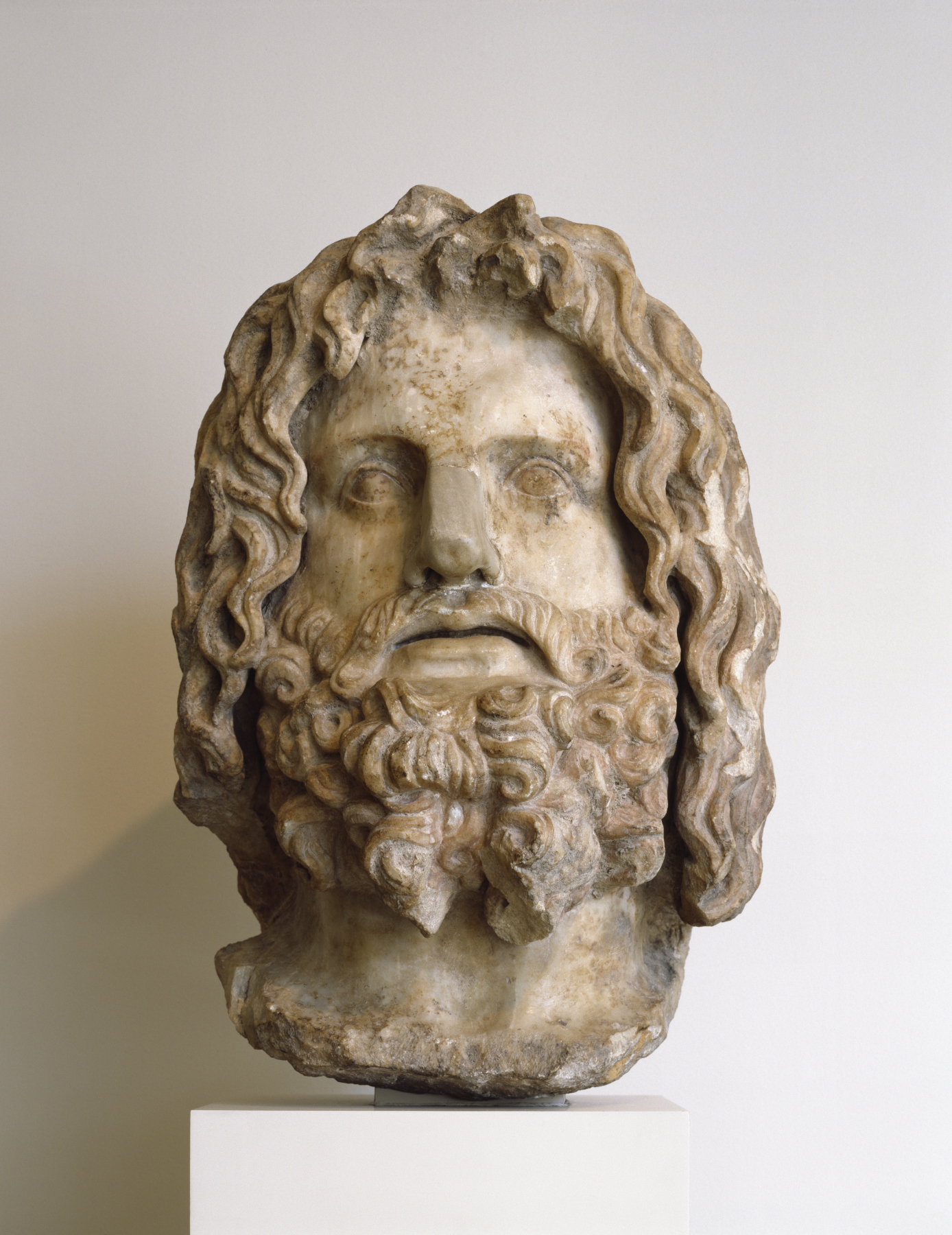Head of Serapis
(Roman Empire )
The size of this head and the abbreviated treatment of the back and sides indicate that it was part of a colossal statue, perhaps shown seated, that was meant to be viewed frontally. He has wide, elliptical shape eyes and a mustache and beard of tight curls that surround his parted lips. His face is framed by wavy hair that reaches down to his chin. While these qualities recall representations of Greek gods such as Zeus, Hades, and Poseidon, the indications of five curls at the forehead (now broken) are typical of Serapis. Further identifying this figure as Serapis is a hole at the top of the head that once served to attach Serapis’s attribute, known as a kalathos (woven basket) or modius (grain measure), which emphasized his associations with abundance and the underworld. Serapis was a syncretistic deity, adopting elements from the Egyptian gods Osiris and Apis, and the Greek gods Zeus, Hades, Asklepios, and Dionysos. The cult of Serapis is thought to have been introduced during the reign of Ptolemy I of Egypt (306-283/282 BCE) and flourished under the Roman Empire. The nose is a modern restoration.
Provenance
Provenance (from the French provenir, 'to come from/forth') is the chronology of the ownership, custody, or location of a historical object.
Dikran Kelekian, Paris and New York [date and mode of acquisition unknown][said to be from Baliana, Upper Egypt]; Henry Walters, Baltimore, 1912, by purchase; Walters Art Museum, 1931, by bequest.
Exhibitions
| 2005-2006 | Ägypten Griechenland Rom: Abwehr und Berührung. Staedtische Galerie Liebieghaus, Frankfurt am Main. |
Conservation
| Date | Description | Narrative |
|---|---|---|
| Technical Report | x-ray diffraction; other | |
| 6/26/1961 | Treatment | cleaned |
| 7/6/1970 | Treatment | cleaned |
| 5/2/1985 | Loan Consideration | examined for loan |
| 1/1/2000 | Examination | examined for condition |
| 6/25/2001 | Treatment | other |
| 7/5/2001 | Examination | examined for exhibition |
| 4/1/2004 | Loan Consideration | examined for loan |
Geographies
Roman Empire
(Place of Origin)
Egypt (Baliana) (Place of Discovery)
Measurements
H: 21 7/16 x W: 15 9/16 x D: 15 3/16 in. (54.5 x 39.5 x 38.5 cm)
Credit Line
Acquired by Henry Walters, 1912
Location in Museum
Accession Number
In libraries, galleries, museums, and archives, an accession number is a unique identifier assigned to each object in the collection.
In libraries, galleries, museums, and archives, an accession number is a unique identifier assigned to each object in the collection.
23.120


